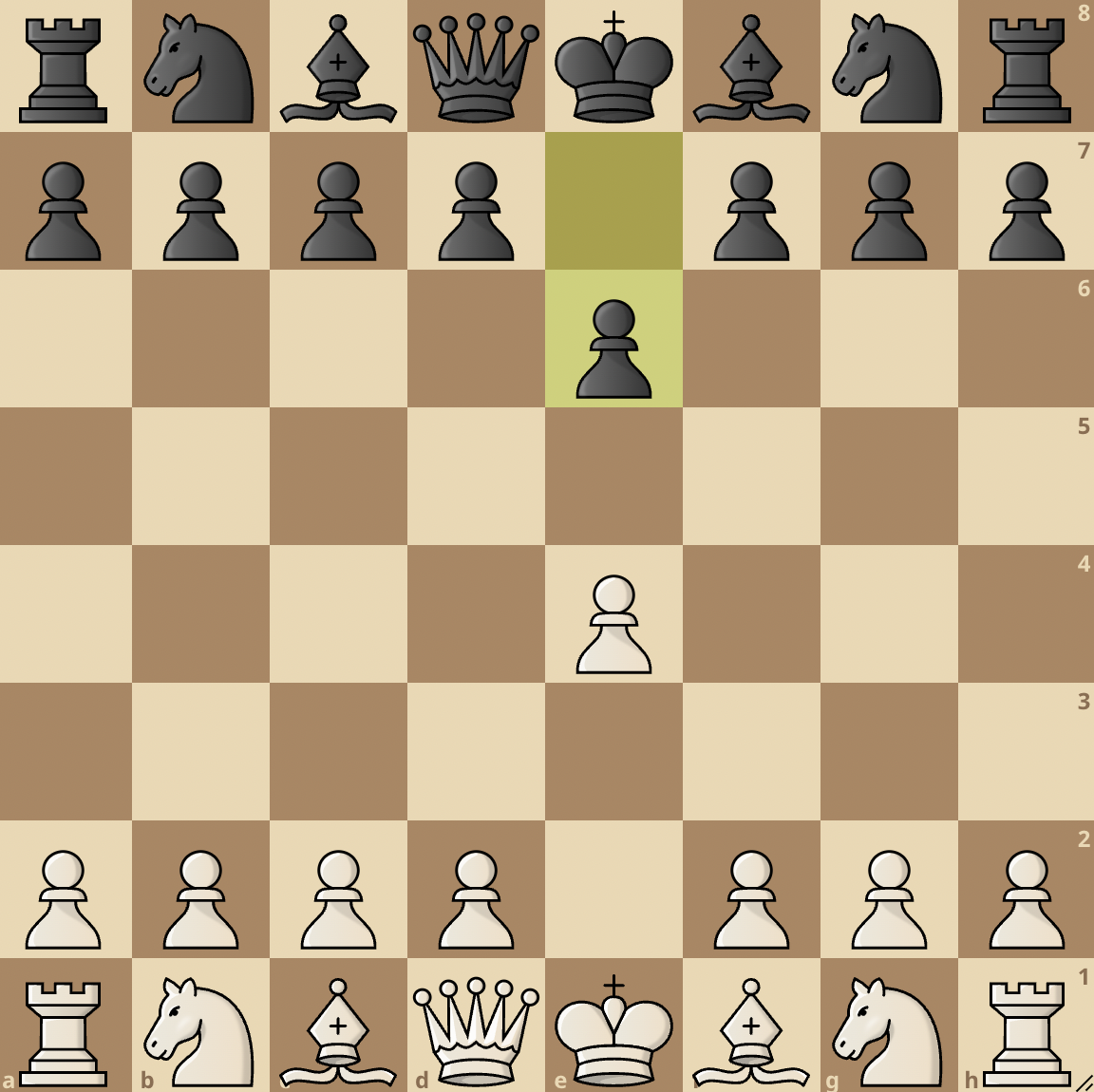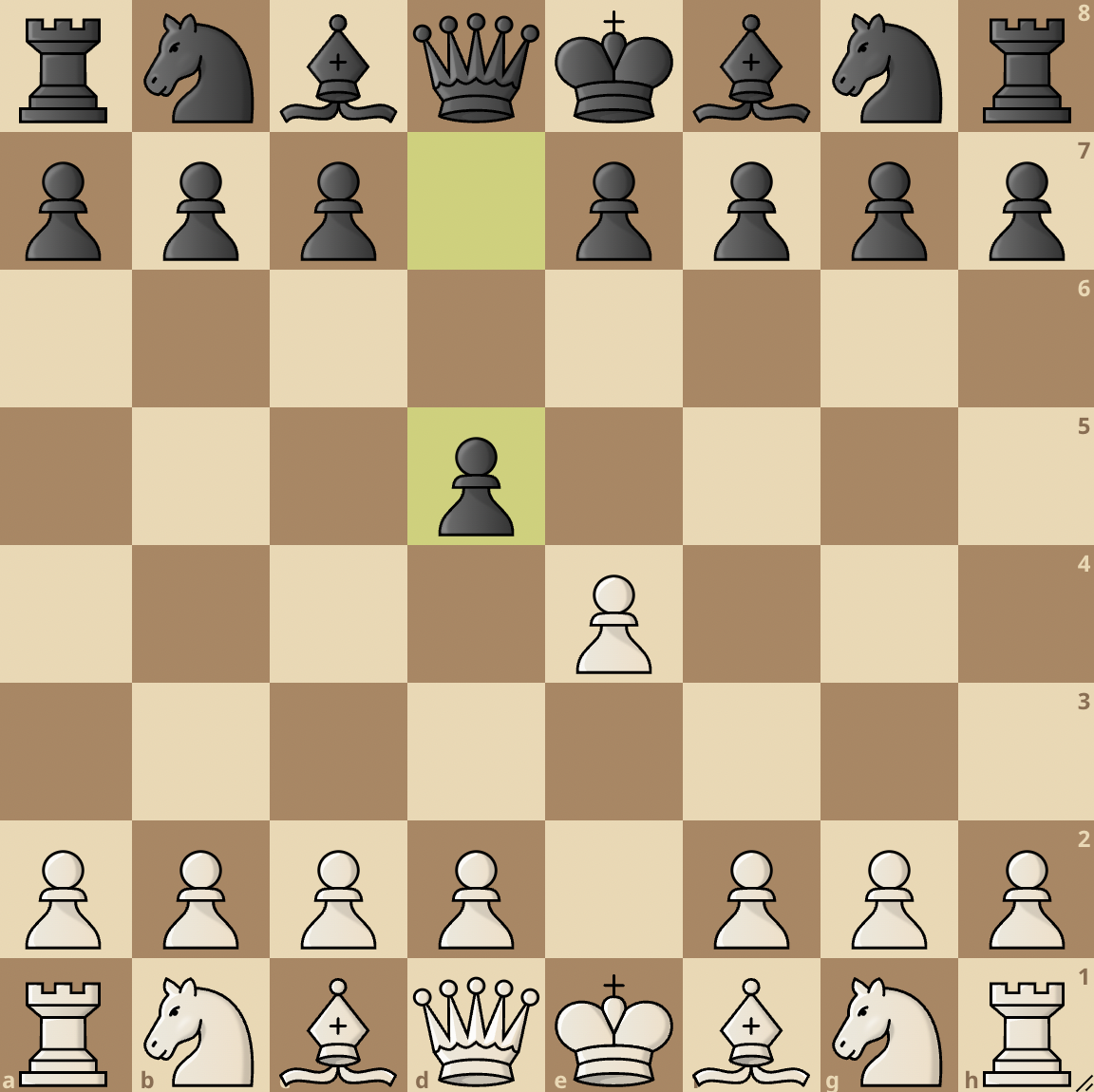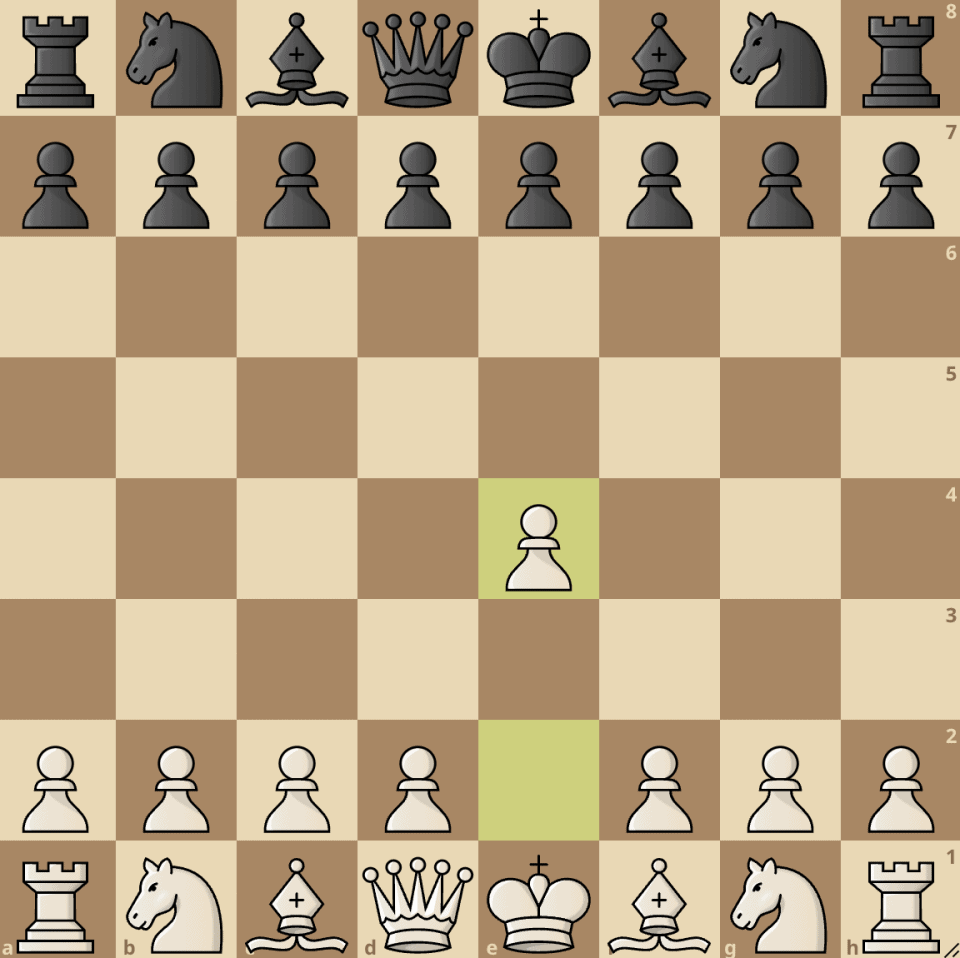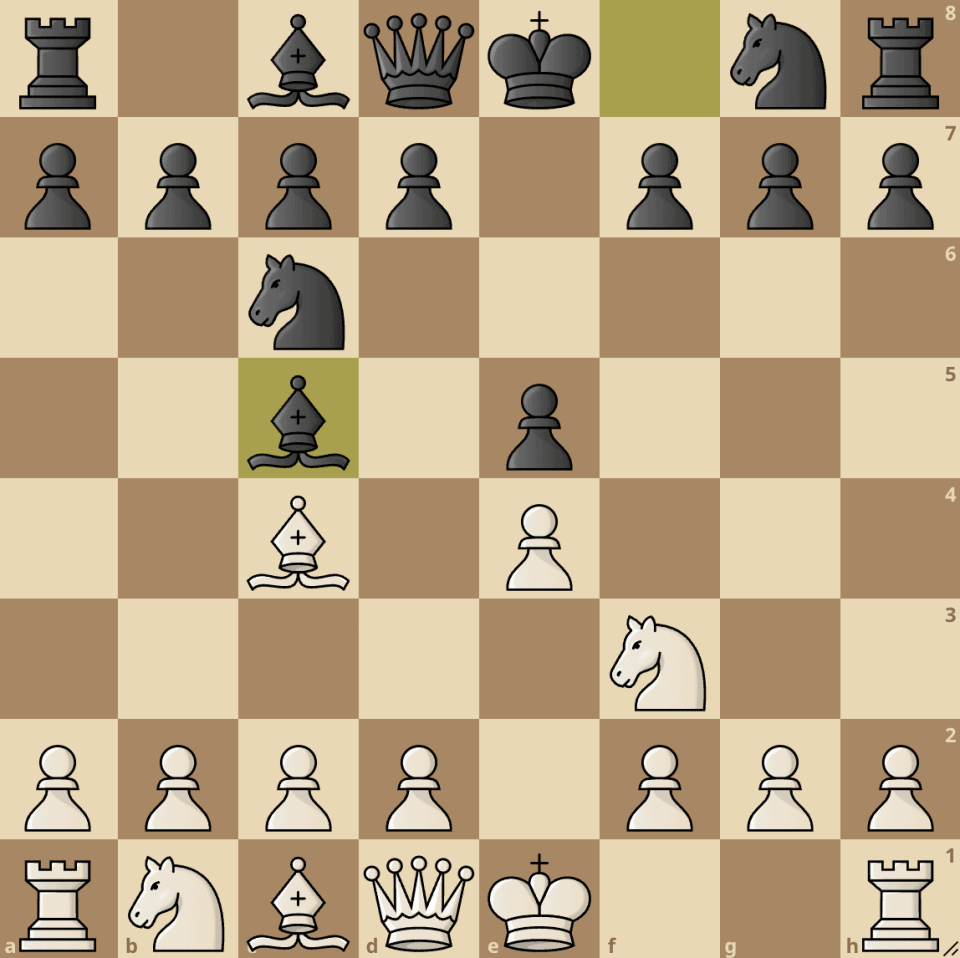Some of the most common replies to e4 are the Sicilian Defense, the French Defense, the Caro-Kann Defense, the Pirc Defense, the Alekhine defense and the Scandinavian Defense.
We also have 1…e5 where we can get other openings such as Ruy Lopez, Italian Game, Scotch Game, Four Knights Opening, Bishop’s Opening, etc.
Each has these openings has its pros and cons, so how do you decide?
The best response for you depends on your playing style and preferences.
Do you like aggressive attacks, solid defenses, or complex positions with lots of tension?
Your answer determines your choice of opening.
Let’s see some of this in detail:
The Sicilian Defense

This is the most popular response to 1. e4.
The move 1…c5 fights back in the center by attacking the d4 square and leads to unbalanced positions where both sides can fight for a win
After 1. e4 c5, White’s most common response is 2. Nf3, entering the Open Sicilian. Here, Black has many options, including:
- The Najdorf (1.e4 c5 2.Nf3 d6 3.d4 cxd4 4.Nxd4 Nf6 5.Nc3 a6) where Black avoids Bb5+ moves and prepares an eventual …b5. This variation is quite flexible.
- The Sveshnikov ( 1.e4 c5 2.Nf3 Nc6 3.d4 cxd4 4.Nxd4 Nf6 5.Nc3 e5 6.Ndb5 d6) which is a good choice for players who have an aggressive style.
- The Taimanov (1.e4 c5 2.Nf3 e6 3.d4 cxd4 4.Nxd4 Nc6) which is a flexible system where Black can switch between a solid and a sharp setup.
Against all these lines, White will play 3. d4 to challenge Black’s center pawn. From there, play often becomes tactical and theoretical, as both sides race to attack the enemy king.
You can study more in our Sicilian Defense article breakdown.
The French Defense

This opening starts with 1…e6, showing that Black intends to give up some space and mobility in exchange for a very solid pawn structure.
While this opening has been given a reputation for being drawish and boring, it is not a fair depiction since many lines are quite sharp, and the draw percentage for the French defense is not much higher than other popular responses to e4.
There are many subvariations in the French defense, so you can tailor the opening to your own style.
Do you like sharp, tactical play? The Winawer variation with 3…Bb4 may be for you. Prefer a more strategic, maneuvering game? Consider the Classical system with 3…Nf6.
The French Defense often leads to positions with an asymmetric pawn structure and chances for both sides to seize the initiative.
You can study more in our French Defense article breakdown.
The Caro-Kann Defense

Another solid option is the Caro-Kann Defense (1…c6).
This is an exceptionally solid opening that is perhaps less ambitious than the other more popular moves. In fact, it has the highest draw percentage of any move on this list.
That said, it has remained popular at all levels of chess. Amateurs can find the basic ideas easy to understand, while professionals may like the favorable pawn structures for Black.
Like the French, 1…c6 contests the center and allows the development of the light squared bishop.
This defense may appeal if you want to avoid highly theoretical or sharp Sicilian lines.
You can study more in our Caro-Kann Defense article breakdown.
The 1…e5 Lines

The e5 move is a classical response to 1. e4, which is known as the Open Game.
By mirroring White’s move, Black grabs an equal share of the center and scope to develop some pieces. This move directly interferes with White’s ideal plan of playing 2. d4.
Openings that can arise from this move order include:
- Ruy Lopez: This is one of the oldest and most popular openings in chess. It starts with the moves 1.e4 e5 2.Nf3 Nc6 3.Bb5.
- Italian Game: This opening is characterized by the moves 1. e4 e5 2. Nf3 Nc6 3. Bc4.
- Scotch Game: This opening is characterized by the moves 1. e4 e5 2. Nf3 Nc6 3. d4.
- Four Knights Game: This opening is characterized by the moves 1. e4 e5 2. Nf3 Nc6 3. Nc3 Nf6.
- Bishop’s Opening: This opening is characterized by the moves 1. e4 e5 2.Bc4.
- Petrov Defense: This opening is characterized by the moves 1. e4 e5 2. Nf3 Nf6.
- Berlin Defense: This opening is characterized by the moves 1. e4 e5 2. Nf3 Nc6 3. Bb5 Nf6.
No worries, we covered most of these in our comprehensive articles. Check out the resources below:
- How To Play the Spanish Opening (Ruy Lopez)
- How To Play The Scotch Game
- How to Play the Petrov Defense
- How To Play The Berlin Defense
- How To Play the Italian Game
Other Defenses
There are a few other reasonable ways to meet 1. e4 like the Pirc Defense (d6), Alekhine’s Defense (Nf6), or the Scandinavian Defense (d5).
The Pirc Defense

This is a chess opening where Black responds to 1.e4 with 1…d6 and 2…Nf6, followed by …g6 and …Bg7, while allowing White to establish a center with pawns on d4 and e4.
It is named after the Slovenian grandmaster Vasja Pirc. The Pirc Defense is usually defined by the opening sequence 1.e4 d6 2.d4 Nf6 3.Nc3 g6.
It has been claimed to give rise to somewhat interesting and exciting games, where Black will have counterplay but has to be cautious about playing too passively.
The Alekhine Defense

This is a hypermodern response to 1. e4. Black lets White establish a presence in the center with the goal of proving it overextended.
Although 1…Nf6 is only Black’s eighth-most popular response to 1. e4, it scores as well as some much more common moves like the French (1…e6) and Pirc (1…d6).
The primary idea behind the Alekhine Defense is to provoke White’s pawns to advance, creating potential targets for Black’s pieces.
The Scandinavian Defense

The Scandinavian Defense is a solid and flexible opening among club players, known for its simplicity and ease of learning.
The main ideas behind this defense are:
- To challenge White’s control of the center.
- To create open lines for Black’s pieces.
- To develop Black’s pieces quickly and efficiently.
The main drawback of this defense is that Black risks being underdeveloped and overrun by White early in the game. However, knowing the main variations and lines will help you avoid quick losses.
Concluding Thoughts
In the end, the best response for you depends on your style, experience, and preferences.
Don’t be afraid to try different options to find what you like. Get to know their main ideas and themes.
With practice, any of these defenses can lead to exciting games.
You may also want to see:







join the conversation